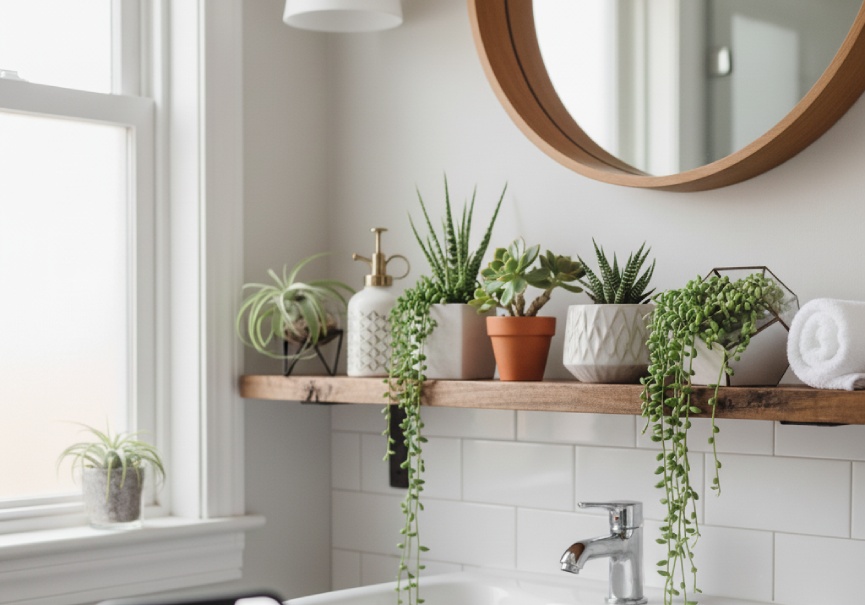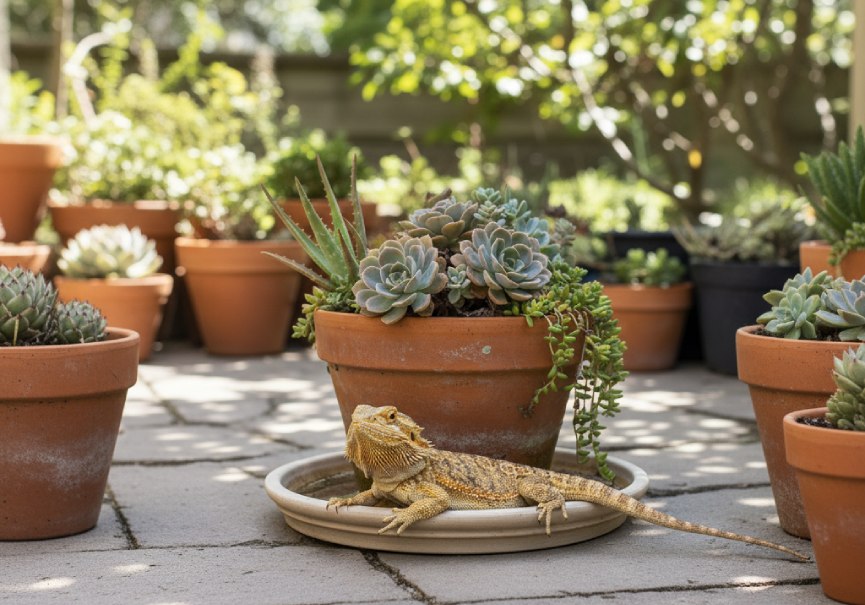How to Repot Succulents: The Ultimate Guide for Healthy Growth

Introduction
Succulents are among the most charming and low-maintenance plants you can own. Their sculptural shapes, vibrant colors, and resilience make them a perfect choice for both beginners and experienced plant lovers. But even these hardy plants need a little extra care from time to time, especially when it comes to repotting.
If your succulent has outgrown its container, looks crowded, or isn’t thriving like before, it might be sending you a message: it’s time for a change. Learning how to repot succulents properly is one of the best ways to encourage healthy growth, prevent root rot, and give your plant fresh nutrients to flourish.
This comprehensive guide walks you through everything from when to repot and what tools to use, to how to safely remove and replant your succulent for lasting health.
Why Repotting Succulents Matters
Repotting isn’t just about aesthetics; it’s about your plant’s survival and well-being. Over time, succulents can outgrow their pots, deplete nutrients in the soil, or suffer from compacted roots and poor drainage.
Here’s why repotting is important:
- Promotes healthy root growth: Old soil can become dense and suffocate roots.
- Prevents overwatering issues: Fresh, well-draining soil reduces the risk of root rot.
- Encourages new growth: A slightly larger pot gives roots room to spread.
- Refreshes nutrients: Fresh soil replenishes minerals lost over time.
In short, repotting breathes new life into your succulent, helping it thrive for years to come.
When Should You Repot Succulents?
Succulents don’t need frequent repotting, but they do benefit from a refresh every 12–18 months. Timing, however, depends on several signs and seasons.
Signs Your Succulent Needs Repotting:
- Roots are growing out of the drainage holes.
- The plant looks top-heavy or unstable in its pot.
- Water runs straight through the pot without soaking in.
- Leaves are wilting even with proper watering.
- The soil has hardened, compacted, or smells musty.
Best Time to Repot:
The ideal time to repot succulents is during spring or early summer, when they’re actively growing. This allows them to adjust quickly and establish new roots. Avoid repotting during winter dormancy, as plants are less likely to recover quickly.
Choosing the Right Pot for Succulents
Selecting the right pot is a crucial step in achieving successful repotting. The pot should not only match your aesthetic preferences but also support the natural needs of your succulent.
1. Drainage Is Non-Negotiable
Always choose a pot with drainage holes. Succulents dislike sitting in water, and poor drainage is a leading cause of root rot.
2. Size Matters
Pick a pot that’s about 1–2 inches larger in diameter than the current one. Too small, and the roots won’t have room to grow; too large, and the soil may retain excess moisture.
3. Best Materials for Pots
- Terracotta or clay: Ideal for beginners, they’re breathable and help excess moisture evaporate.
- Ceramic: Great for decor, but ensure there are drainage holes.
- Plastic: Lightweight and durable, but retains more water, ideal for dry climates.
Choosing the Right Soil
Succulents need soil that mimics their natural, arid habitat. Regular potting soil is too dense and holds too much moisture.
Best Soil Mix for Succulents:
- 2 parts cactus/succulent potting mix
- 1 part coarse sand
- 1 part perlite or pumice
This blend ensures excellent drainage and airflow, preventing soggy roots. You can also buy a pre-made succulent mix from garden stores for convenience.
Tip: Avoid using garden soil it compacts easily and can suffocate delicate roots.
Step-by-Step Guide: How to Repot Succulents
Now that you’ve got your materials ready, let’s go through the repotting process step-by-step.
You’ll Need:
- New pot with drainage holes
- Succulent or cactus potting mix
- Small trowel or spoon
- Gloves (optional, for spiky varieties)
- Brush or air blower (for cleanup)
Step 1: Prepare the New Pot
Fill the bottom of your new pot with a layer of fresh succulent soil mix. This gives your plant a nutrient-rich base and improves drainage.
Step 2: Gently Remove the Succulent
Carefully take the succulent out of its old pot. You can tap the sides to loosen the soil or squeeze the pot gently if it’s plastic. Hold the plant by the base, not the leaves, to avoid damage.
If the roots are tangled or circling the bottom, gently tease them apart using your fingers.
Step 3: Clean and Trim the Roots
Inspect the roots for any signs of rot. Brown, mushy, or blackened roots should be trimmed with clean scissors. Let the roots air-dry for a few hours if they were cut or moist.
Step 4: Place the Succulent in the New Pot
Position your plant in the center of the pot. Add more soil around the roots, pressing lightly to secure the plant, but not too tightly; roots need breathing space.
Ensure the base of the plant sits slightly above the soil line to prevent rot.
Step 5: Let It Rest Before Watering
This step is crucial! After repotting, wait 3–5 days before watering. This resting period allows roots to heal from any damage and reduces the risk of rot.
When you do water, use the soak and dry method: thoroughly wet the soil, then let it dry completely before watering again.
Aftercare: Helping Your Succulent Thrive
Repotting can be stressful for plants, so proper aftercare helps your succulent settle in and thrive.
1. Give It the Right Light
Place your repotted succulent in bright, indirect light for the first week. Gradually reintroduce it to direct sunlight after it adjusts.
2. Follow a Careful Watering Routine
Succulents prefer infrequent but deep watering. Wait until the soil is completely dry before the next watering session.
3. Ensure Proper Air Circulation
Good airflow prevents fungal growth and helps the soil dry faster. Avoid placing succulents in stuffy, humid corners.
4. Avoid Fertilizing Immediately
Wait at least a month after repotting before fertilizing. Once established, feed succulents with a diluted, balanced fertilizer during the growing season.
Common Mistakes to Avoid When Repotting Succulents
Even experienced plant owners can make small missteps. Avoid these common errors for long-term success:
- Using the wrong soil — Regular potting soil holds too much water.
- Choosing pots without drainage holes — Root rot will follow.
- Watering right after repotting — This can cause root damage.
- Burying the plant too deep — Keep the base above the soil line.
- Repotting during dormancy — Always repot when plants are actively growing.
How Often Should You Repot Succulents?
Most succulents only need repotting every 1–2 years, depending on growth rate and soil condition. Fast-growing types like Echeveria or Sedum might need yearly repotting, while slower varieties such as Haworthia or Aloe can stay in the same pot longer.
If your plant looks healthy and the soil drains well, there’s no need to rush; succulents enjoy stability.
FAQs
1. How do I know when to repot my succulent? Ans:-
If roots are growing out of the pot or the soil dries too quickly, it’s time to repot.
2. Should I water my succulent right after repotting? Ans:- No. Wait 3–5 days before watering to let roots heal and prevent rot.
3. Can I reuse old soil for repotting succulents? Ans:- It’s best not to. Old soil may harbor pests, lack nutrients, and drain poorly. Always use a fresh mix.
4. What’s the best pot type for succulents? Ans:- Terracotta pots are ideal because they’re breathable and allow moisture to evaporate naturally.
5. Do I need to fertilize after repotting? Ans:- Wait at least four weeks before fertilizing. Overfeeding can burn young roots.
6. How often should I repot indoor succulents? Ans:- Every 12–18 months, or when the plant outgrows its container.
Conclusion
Repotting succulents may seem intimidating at first, but once you understand the process, it becomes a simple and even enjoyable part of plant care. It’s not just about giving your succulents a new home; it’s about renewing their foundation for continued growth and vitality.
By choosing the right pot, using well-draining soil, and following gentle aftercare, you’ll ensure your succulents thrive for years to come. Whether you’re refreshing an old arrangement or nurturing a single favorite plant, a proper repotting routine will keep your green companions healthy, happy, and stunning.






